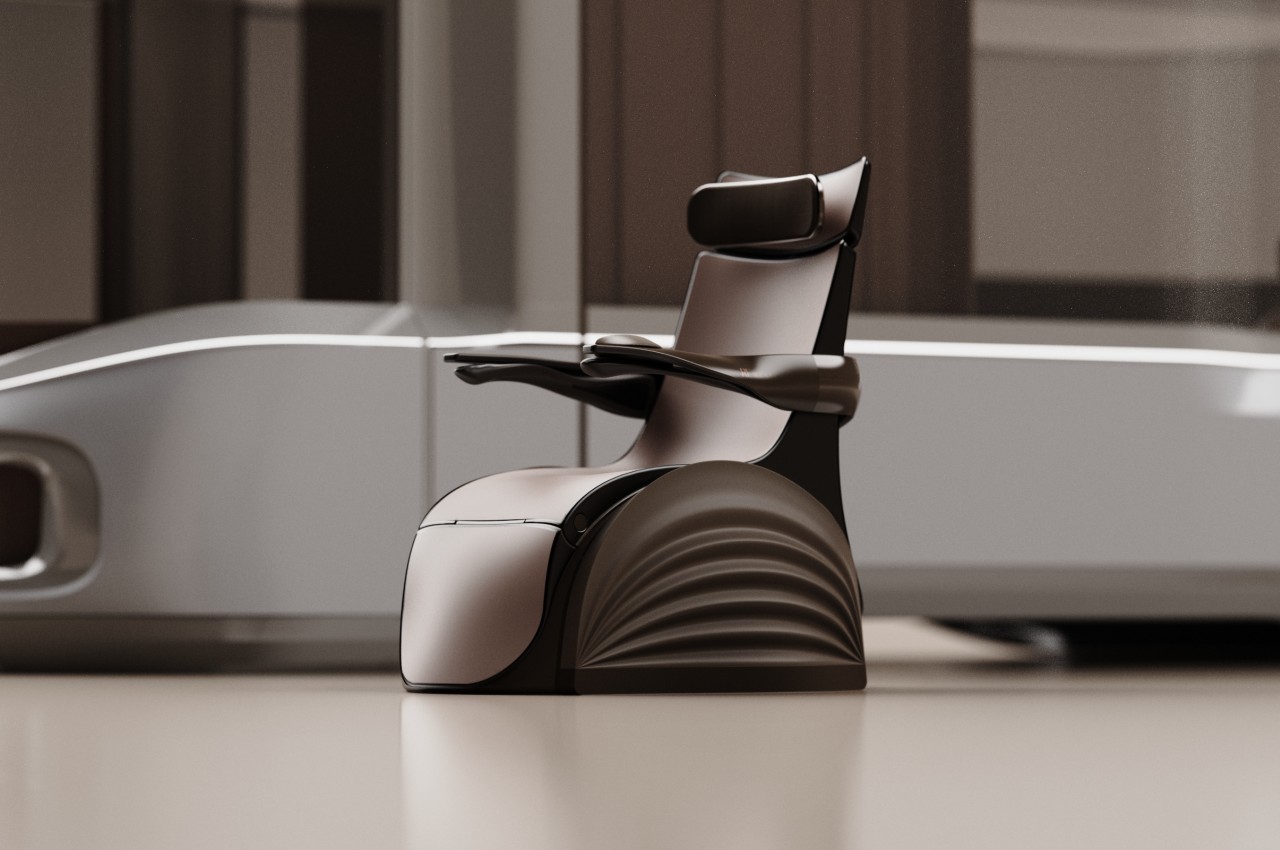
Despite technologies in development to help people with walking disabilities or difficulties regain their footing, the majority of these people will most likely live out their lives in wheelchairs. That’s especially true for elderly people who are unlikely to benefit from those mechanical marvels anyway. But while wheelchairs do bring about some mobility for these people, their clinical and industrial designs don’t exactly inspire confidence, let alone provide comfort for their day-to-day activities. It’s as if these mobility devices were made to liberate their bodies while limiting their spirits, serving as a reminder of their unfavorable situation. This wheelchair concept, however, goes in a very different direction, designed to feel good and look great as if it were part of a high-class furniture set, giving users a confidence boost to regain a bit of their independence every day.
Designers: Hanyoung Lee, Haejun Park, Seongmin Ha, Jun Hong, Soyeon Park, Hyunsub Shin
Rendered on KeyShot: Click Here to Download Your Free Trial Now!
For some elderly people, wheelchairs represent an odd dichotomy. These personal mobility devices allow them to go places on their own that would otherwise be unreachable for them, but at the same time, they also serve as a very visible and visual reminder of their disability. These people, however, are in more need of social support and emotional confidence through independence of movement that will let them connect with other people on their own. The Resilience motorized wheelchair concept is designed to meet that need not through technological features alone but also through the smart use of colors and materials.
In a nutshell, Resilience transforms the idea of a typically rugged motorized wheelchair into an elegant chaise lounge, one that you might not even recognize as a wheelchair. Colors such as Resilient gray and Classy chrome give the mobile piece of furniture an elegant flair, while materials such as plastic and leather provide soft comfort and pleasant tactile experiences. At the same time, the construction is also made to be durable and stable, employing aluminum and metal parts that inspire confidence in the use of the wheelchair.
Beyond just materials, the Resilience’s form also generates mellowing thoughts through the use of smooth surfaces and gentle curves. The base has wavy details that could call to mind the ridges of clam shells or the ripples of water. This elegant design is used as a metaphor for the elderly person’s influence extending and expanding as their mobility and independence increase.
Resilience is actually part of a larger mobility system, one that includes a self-driving “Brio” vehicle designed specifically to accommodate this luxurious motorized wheelchair. Brio uses the same design language as Resilience, making it look and feel like they’re two parts of the same whole, one that’s designed to help expand the elderly’s reach, whether indoors or outdoors.